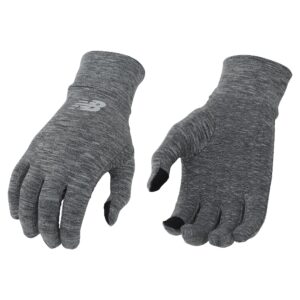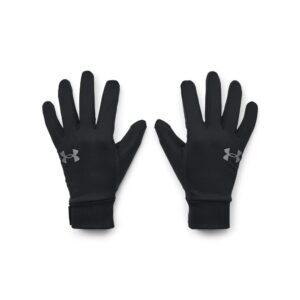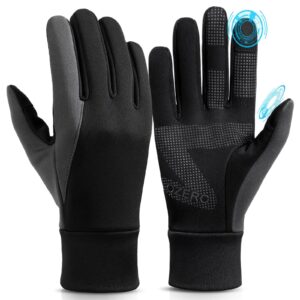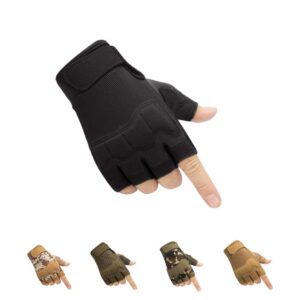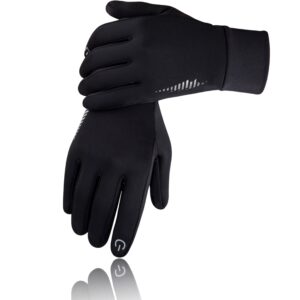Introduction:
Hiking throws your hands into all sorts of situations, cold, wind, rough rocks, even sudden rain. You want protection, but you still need to grip poles, adjust zippers, or just snap a photo. Read further to find out what are the best hiking gloves.
The right hiking gloves keep your hands warm and safe without turning them into useless mitts.
There are a few main types of hiking gloves out there. Lightweight liner gloves are great for mild weather or as a base layer when things get cold.
Insulated gloves step up the warmth for winter hikes, and waterproof gloves are a lifesaver when the sky opens up.
When picking hiking gloves, focus on insulation, waterproofing, and dexterity. Synthetics handle wet weather better than down, while wool keeps you warm even if it gets damp.
Try to find gloves that let you do basic stuff, zipping your jacket, checking your phone without taking them off. We put a dozen pairs through their paces in all sorts of weather to see which ones actually deliver on warmth, protection, and usability.
New Balance Lightweight Running Gloves
We like these gloves for cool weather hikes when you just want a little warmth and easy phone access.
Pros
- Touchscreen fingers work well with phones and GPS
- Super lightweight, so you barely notice them
- Anti-slip palms help grip trekking poles
Cons
- Only good above about 35–40°F
- Thin
- Some stitching came loose after regular use
We wore these on a few chilly autumn hikes perfect for that in-between weather where it’s not quite cold, but you want something on your hands. The fabric feels soft and blocks wind surprisingly well.
Touchscreen features actually work on both thumb and index finger, which is rare. We snapped photos and checked maps without taking them off.
The grip patches help a lot with poles, especially on steeper hills. But once temps dropped into the low 30s, our fingers got cold fast. These just aren’t made for real winter.
The fit feels true to size, snug but not tight. We tossed them in the wash and air dried them, no problem. For spring or fall hikes, they’re a solid pick.
Under Armour Storm Liner Gloves
These liners are decent for mild days or layering, but don’t trust them in real downpours.
Pros
- Touchscreen works great
- Light enough to layer under heavier gloves
- Fleece thumb patch wipes sweat or glasses easily
Cons
- Not really waterproof in heavy rain
- Doesn’t give much warmth for cold hikes
- Fit can be tight and cut off circulation
We mostly used these as liners under bigger gloves. They slide under winter gloves without making your hands feel stuffed. On warmer days, we wore them solo and liked the breathable fabric.
The touchscreen feature is honestly the best part, phone and GPS work just fine. But in the rain, water soaked through fast. They dried out quickly, but our hands were already wet by then.
They run small. If you’ve got big hands, maybe size up. The fleece thumb is a nice touch for wiping foggy glasses or sweat.
SUJAYU Full Finger Hiking Gloves
We’d grab these for light hiking or summer walks, not for gnarly terrain or cold weather.
Pros
- Super light, keeps hands cool in the heat
- Touchscreen fingertips actually work
- Cheap
Cons
- Thin material
- Doesn’t last long on tough trails
- Sizing runs small and can feel tight’
For easy day hikes in warm weather, these are fine. The material is thin enough that your hands won’t get clammy, and the silicone dots help with grip.
Touchscreen works for snapping pics or checking your map. The UV protection is a bonus if you’re out all day.
But they tear pretty easily if you’re scrambling over rocks or pushing through brush. We saw some wear after just a couple of rough outings.
If you want a looser fit, go up a size. They’re good as spares or for gentle trails, but not for anything hardcore.
OZERO Winter Touchscreen Gloves
These are best for cool, not freezing, winter hikes. Great for phone use, but not for deep cold.
Pros
- Touchscreen fingertips work well
- Lightweight, so you keep your grip
- Water-resistant for light rain or snow
Cons
- Not warm enough for freezing temps
- Water seeps in at seams after a while
- Material wears out faster than heavier gloves
We wore these for fall and early winter hikes. Touchscreen features are better than most.
The grip is solid, with silicone dots that help when you’re holding poles or fiddling with your pack. They fit snug but not too tight.
Light rain stayed out for about an hour, but after that, seams started to leak. The fleece lining is cozy for temps above freezing, but not much lower.
We saw some wear at the fingertips after a few months. For casual hikes and basic protection, they’re decent but don’t expect them to last forever.
HYCOPROT Fingerless Tactical Gloves
These are a solid pick for day hikes when you want grip and protection but need your fingertips free.
Pros
- Light nylon
- Padded palms help prevent blisters
- Quick-release finger tabs make them easy to pull off
Cons
- Fingerless
- Velcro wrist can snag on stuff
- Not built for serious abuse
We wore these on a few long day hikes and liked how breathable they felt. The knitted nylon lets sweat escape, so our hands didn’t get swampy.
The palm padding really helps with poles and rough rocks. It’s thick enough to protect, but not so much that you lose feel.
Fingerless design is handy for snapping photos or using your GPS, but your fingertips will freeze if it’s cold out. Velcro straps adjust easily, and the quick-release tabs are actually useful when you want them off fast.
SIMARI Winter Gloves
These gloves work well for light hiking in cool weather. They’re just not warm enough for serious winter conditions.
Pros
- Touch screen fingers work perfectly with phones and GPS devices
- Silicone grip patches provide excellent hold on hiking poles and gear
- Reflective patterns on the back improve visibility during early morning hikes
Cons
- Too thin for cold weather hiking below 40 degrees
- Sizing runs small and may not fit properly
- Limited warmth makes them unsuitable for winter mountain hiking
We tried these gloves on a few fall hiking trips. They felt just right in moderate temperatures.
The touch screen feature honestly surprised us. We could check our GPS, snap photos, and answer calls without peeling off the gloves.
Grip quality really makes a difference out there. Those silicone dots on the palms and fingers gave us solid control of our trekking poles and water bottles.
Even on wet rocks, we never worried about dropping gear. That extra hold was a relief.
But warmth is where things get dicey. One chilly morning at 35 degrees, our fingers started feeling numb fast.
The thin material just doesn’t block out the cold enough for true winter hikes. It’s a bit of a letdown if you want all-season gloves.
Fit is another thing to watch. We ordered our usual size, but they felt snug around the fingers.
Strangely, the fabric between the thumb and index finger felt loose, which made us fumble a bit more than usual. Not a dealbreaker, but worth knowing before you buy.
All in all, these gloves are a decent pick for cool-weather hikes where you need to use your phone or keep a steady grip. Just don’t count on them when the mercury drops way below 40. If you’re after something for mild days and don’t mind a snug fit, they’re worth a look.
Buying Guide
When we pick out hiking gloves, it’s worth considering a few key features. The right pair can totally change our outdoor experience, for better or worse.
|
Glove |
Type |
Weather Range |
Best For |
|
New Balance Lightweight Running Gloves |
Lightweight touchscreen liner |
Cool weather (above 35–40°F) |
Phone use & light warmth in cool temps |
|
Under Armour Storm Liner Gloves |
Liner glove (touchscreen) |
Mild to moderate, layering use |
Layering under winter gloves or solo mild hikes |
|
SUJAYU Full Finger Hiking Gloves |
Lightweight full finger glove |
Warm weather, UV protection |
Budget warm-weather day hikes |
|
OZERO Winter Touchscreen Gloves |
Water-resistant winter glove |
Fall & mild winter (above freezing) |
Casual fall/winter hikes with light rain |
|
HYCOPROT Fingerless Tactical Gloves |
Fingerless tactical glove |
Mild to warm weather (not cold) |
Grip & dexterity with finger freedom |
|
SIMARI Winter Gloves |
Light touchscreen winter glove |
Cool weather (above 40°F) |
Light hiking with grip & touchscreen use |
Material matters a lot. Synthetic fabrics dry fast and still work when they’re wet.
Wool keeps hands warm, even if it gets a bit damp. Leather sticks around the longest, but honestly, it takes forever to dry if it gets soaked.
Fit is more important than most people think. Gloves should feel snug, not like they’re cutting off circulation.
We need to move our fingers easily to grip hiking poles or mess with zippers. If they’re too tight, forget about it, your hands will cramp up fast.
| Feature | What to Look For |
|---|---|
| Waterproofing | Membrane or coating that blocks water |
| Breathability | Allows sweat to escape |
| Grip | Textured palms and fingers |
| Cuff Length | Covers wrist area completely |
Weather conditions should always influence our choice. Cold, dry days? Go for insulated gloves.
If it’s going to be wet, waterproof gloves are a must. On milder days, you can get away with something light and breathable.
Think about your activity level too. If you’re moving fast, you’ll want gloves that breathe and wick away sweat.
For slow hikes in the cold, insulation is your best friend. Nobody likes frozen fingers.
Durability comes down to things like reinforced palms and tough stitching. These details keep gloves from falling apart after a couple of rough hikes.
Price is all over the map. Higher-priced gloves usually have better materials and last longer, but sometimes budget picks are fine if you only hike now and then.
Try gloves on before buying, if you can. Everyone’s hands are different, and comfort is personal—no sense in suffering through a long hike with bad gloves.
So, take a little time to find what works for you. The right gloves can make your next hike so much better. Stay warm, stay dry, and get out there!
Support the Adventure
To make your walls less boring, check out my photography portfolio and bring a piece of the wild and my story into your home.
If you’d like to fuel future adventures, you can donate a coffee on Ko-Fi. Every cup keeps me chasing sunrises and stories.
When you shop using my affiliate links, every click helps support this blog at no extra cost to you. It’s a small way to keep Unicorn Adventure alive and kicking while I keep exploring.
Subscribe to my mailing list for future updates, new stories, and behind-the-scenes adventures.
Stay connected with me on Instagram and Facebook for more photos and daily inspiration.
Thanks for being part of the journey, Unicorn Squadron!



